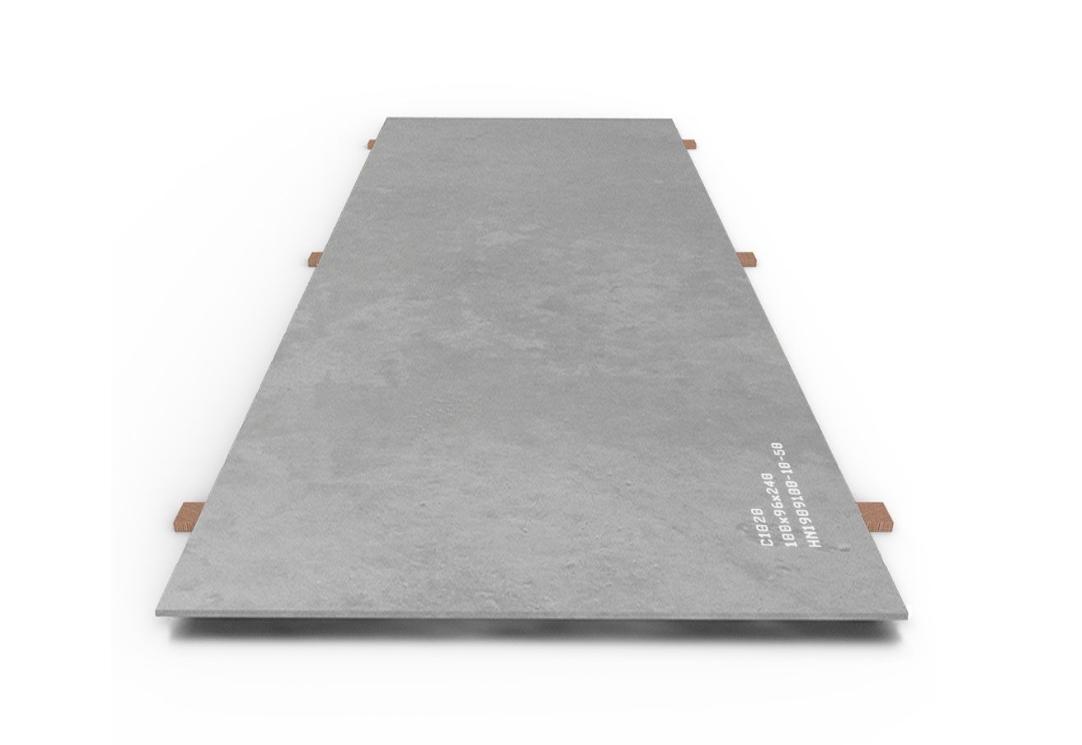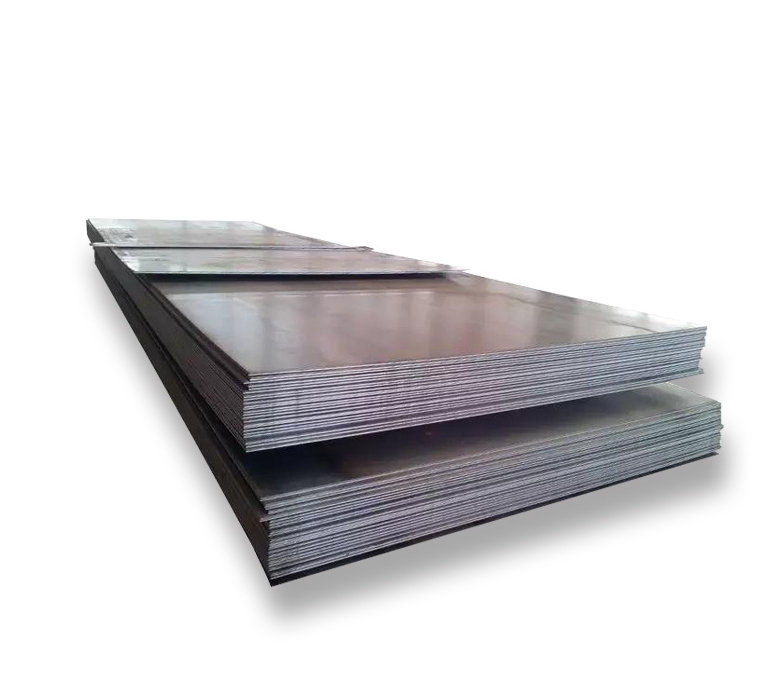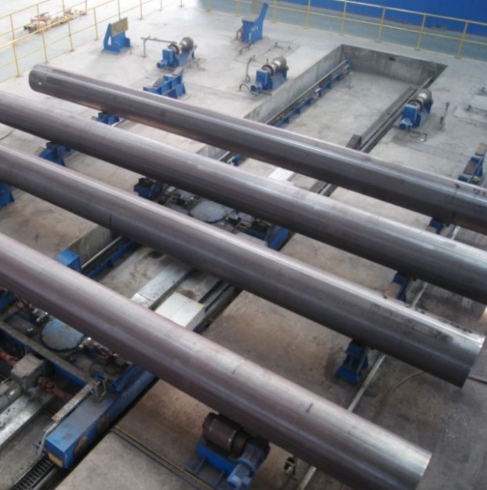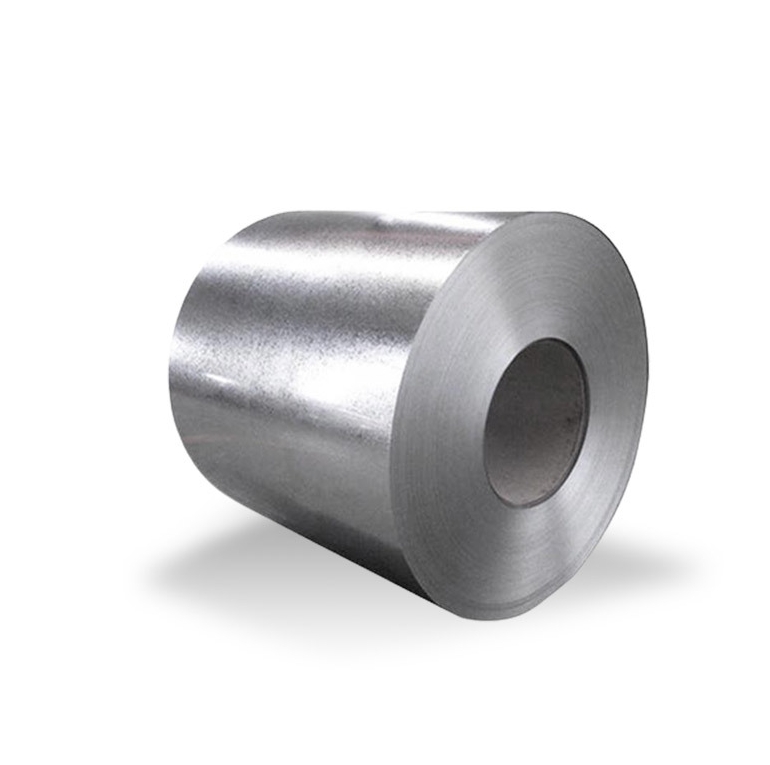AR500 remains the workhorse for heavy-wear and ballistic applications in 2025. Its through-hardened chemistry and heat treatment produce a Brinell hardness typically around 460–540 HBW, and market prices vary widely by region, thickness and finish — roughly USD $650–$2,200 per metric ton at bulk/FOB levels depending on origin and order size. For reliable supply, we recommend buying directly from factory manufacturers such as our Luokaiwei operations in China where we can offer competitive ex-works pricing, custom sizes, fast stock shipment and full test documentation.
What AR500 is — short technical definition
We treat AR500 as a trade designation for a quenched & tempered, abrasion-resistant (AR) steel grade engineered to deliver high surface hardness (nominally “500” Brinell, but in practice a range). It is not a single ASTM chemical standard but rather a market name used by plate makers and distributors. Typical hardness values reported for AR500 are in the neighborhood of ~460–540 BHN, giving the plate excellent wear resistance for sliding and abrasive environments.
How AR500 is produced and why hardness matters
We explain AR500’s performance by the manufacturing route. Producers use a carefully controlled quench & temper cycle after hot rolling. This combination creates a martensitic microstructure near the surface and a tempered core that balances hardness with toughness. The Brinell hardness test (method referenced under ISO/ASTM) is the common metric used to verify surface hardness; values define the AR grade and are important for design and safety. Hardness is the dominant property that determines abrasion resistance but higher hardness also reduces formability and increases the risk of brittle fracture if not heat-treated correctly.
Typical mechanical properties and test standards
We rely on manufacturer certificates and international standards when specifying AR500. Typical ranges (informational, to be confirmed by mill test certificate):
-
Brinell hardness (HBW): ~460–540 (nominal “500”).
-
Tensile strength: often reported in the range ~900–1,400 MPa depending on plate thickness and supplier process.
-
Elongation & impact: limited compared with structural steels; manufacturers report reduced ductility and variable Charpy energy. Use actual mill test values for critical designs.
Standards & tests to request from any mill: Brinell test method (ISO 6506 / ASTM E10), full chemical analysis (spectrometry), tensile test report, and heat-treatment traceability on the mill certificate. These documents are non-negotiable for safety-critical parts.
Typical thicknesses, plate sizes and surface conditions
We typically see AR500 offered in common stock forms:
-
Thickness range: ~3 mm (1/8″) up to 50 mm (2″) or more for engineered armor and wear liners. Most commercial inventories focus on 3/16″ (0.187″), 1/4″, 3/8″ and 1/2″.
-
Standard widths/lengths: 1000–2500 mm wide, cut-to-length sheets often sold in 4×8 ft or 5×10 ft panels.
-
Surface finish: mill scale, shot-blasted, or precision-ground (ground requires additional processing and higher cost).
When specifying, state the required hardness as measured and the required orientation (longitudinal/transverse), since toughness and hardness can vary with rolling direction.
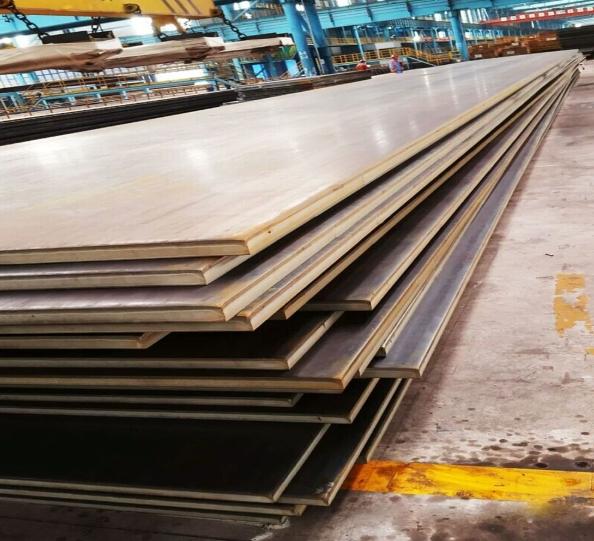
Primary industrial applications
We find AR500 excels where sliding abrasion and repeated contact occur. Typical applications include:
-
Bucket lips, cutting edges and liners for excavators and dump trucks.
-
Hopper, chute and conveyor liners in mining and aggregate handling.
-
Ballistic armor plates and shooting targets (thicker grades, properly certified and heat-treated).
-
Wear plates in recycling and material handling systems.
Because AR500 trades off ductility for hardness, we avoid it where repeated heavy impacts (not abrasion) may cause spalling; in such applications a lower-hardness AR400 or special high-toughness alloy may be better.
Fabrication, welding and cutting notes
We recommend the following when working AR500:
-
Cutting: prefer plasma or waterjet. Oxy-fuel cutting is not recommended for high-hardness AR plate because of edge hardening and cracking.
-
Welding: preheat and controlled interpass temperature are often required; choose filler metals and procedures according to supplier guidance. Many suppliers provide welding procedure recommendations—always qualify weld procedures with representative coupons and mechanical tests.
-
Forming: limited. Bending or stamping risks edge cracking unless the plate is a low thickness and operation is engineered for hardened steels.
-
Removal of heat-affected zones: for ballistic applications, edges and welds may require post-grind or local heat treatment to remove brittle zones.
Ballistics, safety and target-use guidance
We emphasize two safety points: AR500 used as ballistic plates or shooting targets must meet strict thickness, hardness and mounting practices. Targets must be angled, positioned at safe distances, and replaced when pitting or cracking appears. For body armor, AR500 is used commercially but plate certification and traceable ballistic testing are essential. Never assume a nominal “AR500” label guarantees ballistic performance — request certified ballistic test reports when life-safety is involved.
Factors that drive AR500 price in 2025
We track several cost drivers that determine sticker price:
-
Raw material and slab costs: global hot-rolled coil and slab prices set the base. Recent volatility in scrap and ferrous markets has broadened price ranges.
-
Heat treatment & QA steps: quench & temper cycles, hardness testing, and certification increase cost vs. plain carbon plates.
-
Thickness and yield per sheet: thinner plates have higher per-kg processing ratios (cutting & finishing costs take bigger share).
-
Order quantity & lead time: small sample orders and cut-to-size pieces cost more per ton than full-plate pallets.
-
Origin / tariff / shipping: freight and trade measures cause price variance between China, India, Europe and the U.S.
-
Value-added processing: grinding, CNC nesting, fabrication or certified ballistic testing adds to final price.
Global price comparison — typical ranges (2025 estimates)
Important note: AR500 pricing is volatile and highly dependent on thickness, finish, minimum order quantity and Incoterms. The table below summarizes market ranges we observed in mid-2025; use it for budgeting and request current quotes for procurement decisions.
| Region | Typical bulk price (FOB/CIF, USD per metric ton) | Typical 4×8 sheet 3/8″ price (retail, approximate) | Notes / sources |
|---|---|---|---|
| China (factory, FOB) | $650 – $1,100 / t | 4×8 3/8″ sheet: $450–$900 | Chinese factory listings and platform quotes show very competitive low-end prices for large MOQ, but quality/certification varies. |
| India (FOB / domestic) | $700 – $1,700 / t | Retail sheets ~$500–$1,100 | Indian suppliers show a wide range; bespoke ballistic grades command premium. |
| USA (distributor/retail) | $1,200 – $2,200 / t | 4×8 3/8″ retail: $600–$1,000+ | Distributor/retail prices are higher due to cutting, testing, and lower MOQ; cut-to-size prices available from Onlinemetals and distributors. |
| Europe (producer/stock) | $1,100 – $2,000 / t | Similar to US retail | European branded AR (Raex, SSAB, etc.) carries a premium for traceable quality and CE/test documentation. |
(Ranges are indicative; always ask suppliers for current CIF/FOB quotes and mill certificates.)
How to buy — spec sheet checklist we use
When procuring AR500, we always include this minimal specification block in RFQs:
-
Required AR grade / target hardness (e.g., AR500, hardness range 480±20 HBW).
-
Thicknesses and tolerances, number of plates and cutting instructions.
-
Mill test certificate (chemical composition, hardness chart, tensile).
-
Heat treatment traceability and surface finish requirements.
-
Welding / fabrication recommendations if buyer will weld.
-
Inspection & acceptance: request sample hardness tests, and reserve right to third-party verification on arrival.
We always negotiate delivery Incoterm (EXW/FOB/CIF) and inspect documentation before payment.
Why choose a Chinese factory supplier
We are Luokaiwei, a Chinese manufacturer with factory stock and full customization capability. In our experience buyers select Chinese factories for three reasons:
-
Factory price advantage. By selling direct from the plant we remove distributor margins — particularly beneficial for large tonnage.
-
Custom processing & fast stock delivery. We offer quick cutting, CNC nesting, and moderate MOQ solutions for rapid turnaround.
-
Full traceability & QA on request. We provide mill test certificates, hardness maps, and heat-treatment records for engineered orders.
Risk factors, lead times and logistics considerations
We advise clients to consider:
-
Quality variability: “AR500” is a market term — composition and toughness differ by mill. Always validate with certificates and, for critical usage, with independent tests. 维基百科
-
Import controls & duties: tariffs vary by origin and product code; factor customs clearance into landed cost.
-
Transport & packaging: heavy plates must be properly crated and sea-secured to avoid edge damage.
-
Storage & handling: prolonged outdoor storage accelerates corrosion; specify surface treatment if intended for outdoor use.
Selection checklist
-
Need high abrasion but low impact? → AR500 is appropriate.
-
Expect repeated blunt impact or bending? → choose AR400 or a high-toughness alloy.
-
Require ballistic certification? → demand ballistic test reports, procurement from certified vendors only.
-
Need tight flatness / ground surface? → add precision grinding to RFQ (not standard).
-
Small prototype quantity? → expect higher per-kg price from distributors; consider China factory sample orders if acceptable.
Frequently Asked Questions
Q1 — What is the BOM unit I should use for budgeting AR500?
A1 — For bulk purchasing, price is normally quoted per metric ton (or per CWT in U.S. markets). For prototype or retail purchases, distributors may quote by sheet or by piece (4×8 cutting). Convert both ways when budgeting.
Q2 — Are AR500 and AR550 interchangeable?
A2 — No. AR550 is harder and more brittle; choose AR550 only when hardness is essential and the design tolerates lower toughness. Confirm impact requirements before selecting.
Q3 — Can AR500 be welded without issues?
A3 — It can be welded, but welding procedures require qualification, preheat and matching fillers; otherwise heat-affected zones may crack. For structural or ballistic parts, perform weld procedure qualification tests.
Q4 — Why do Chinese FOB prices sometimes appear much lower?
A4 — Chinese suppliers often quote factory-level FOB prices for large MOQs and may use different finishing or certification levels. Lower prices can reflect minimal finishing, different chemical control or lower service levels. Always verify certificates and perform incoming inspection.
Q5 — What certificates should I insist on?
A5 — Mill Test Certificate (chemical, hardness), Brinell hardness report (ISO 6506 / ASTM E10 format), tensile test, and heat-treatment traceability. For ballistic or life-safety parts, include accredited ballistic test certificates.



